-
Viewpoint on 'IONS'
Viewpoint on 'Scientific Literacy'
- Proudly sponsored by
-


-
An Ultraviolet Laser Diode
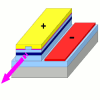
Laser diodes are the cheapest and most reliable lasers; nevertheless, they have hardly been able to emit in UV until now. This last barrier has now been broken, thus enabling potential and important applications, ranging from medicine to security issues.
-
LEGO-Optics
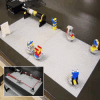
When I hear, I forget; when I see, I remember; but only when I do, do I understand. When it is not possible to let students play with expensive optical setups, LEGO comes into play.
-
Happy Birthday Laser!
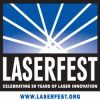
This year the world celebrates the 50th birthday of the laser through an initiative jointly organized by various optics and photonics organizations: the LaserFest. Happy birthday laser!
Forging Quantum Teams
A rowing team consists of a given number of athletes; adding or subtracting one would make it impossible for the team to compete. Recent experiments have shown that conditions exist under which quantum particles can also team up in a controlled number.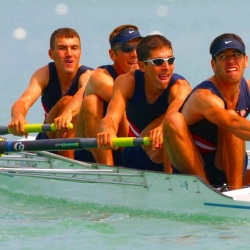
Teaming up in the right number. In rowing a given number of athletes join forces to compete. No deviation from this number could prevail during a competition. Similarly, in Efimov physics only certain numbers of bosons can bind together.
Two is company, three is a crowd – both in everyday life and in physics. To predict the behavior of two is nowhere near as complicated as predicting the behavior of three. For centuries, some of the greatest minds like Newton, Euler or Lagrange have studied the behavior of three mutually interacting bodies — such as three planets under the influence of gravity — and they have come up with solutions for special cases of the classical three-body problem. However, Poincaré finally discovered that this seemingly simple problem exhibits chaotic behavior, which laid the foundation for studies of deterministic chaos and shattered hopes for finding a simple solution for these few-body problems.
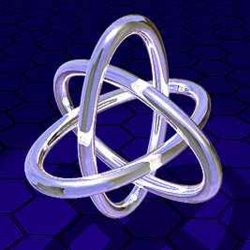
The Borromean Rings. Efimov states are often illustrated by the Borromean rings. All three rings are bound together but no two rings are bound as pairs. Illustration: Mark Lengowski (Cabletron).
In order to produce Efimov states, the setting has to be extremely well-controlled. For example, Efimov states are intrinsically rather unstable, and ambient temperatures would quickly break them apart. Therefore, experiments should be performed at very low temperatures. Also, the interactions between the particles have to be very well-controlled. Both of these requirements are fulfilled in experiments with ultracold atomic gases. "The tuneability of interactions," Francesca Ferlaino, research associate in the Innsbruck group, explains "is one of the key features that have led to such an interest in ultracold atoms. In our case, there is a rather strict relation between the energy of the particles and the interaction between the particles in order to observe the few-body state." Earlier experiments on helium, for example, were limited by the fact that only certain parameters could be studied since no tuning of interactions was possible. To overcome this limitation, the Innsbruck experiments have been carried out using ultracold cesium atoms where the interactions between the particles — the scattering lengths — were controlled using Feshbach resonances. Hereby, it became possible to scan a region of very strong interactions between the particles and ultimately control how the particles would team up.
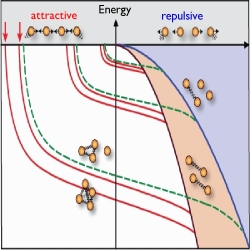
Bosons in different configurations. Depending on scattering length and energy, bosons will stay unbound, form pairs, triplets or quadruplets. Once a single configuration of triplets (green line) or quadruplets (red line) is found, an infinite number of bound states can be deduced as they all vary by a constant factor. Illustration: Grimm's group (University of Innsbruck).
"Efimov states are a beautifully elegant solution in a field which, at first sight, looks so hopelessly complicated," Chris Greene, one of the pioneers of Efimov physics, says. The Efimov scenario is extremely general and implies that if one bound state is found at a certain scattering length, an infinite number of bound states exist, all differing by a certain factor. Furthermore, Efimov states of three particles occur also where the interactions are not strong enough to form pairs. "At the beginning," Greene recalls, "these peculiarities were so surprising that nobody believed it. But when we started out to disprove this effect, we ended up proving it. And finally, we were able to gradually understand more and more about this fascinating field."
Ultracold atomic gases are used as a powerful tool to study effects of a large class of systems. As the ability to control these systems is increasingly well established, they are now used to realize condensed matter systems and to study conceptually deep quantum effects. "Of course, it was one of our principal motivations to see if we were really able to measure four-body states," Ferlaino admits, "but now we are even able to go deeper and deeper into the effect." Asking about where the journey will lead, Greene insists that "it is always difficult to guess what the future brings, but there are many dreams: for example, we are hoping to use this kind of experiment with controlled interactions to finally develop a better understanding of high-temperature superconductors, or we might hope that these few-body states help us better understand the formation of chemical compounds." With regard to the present project, Ferlaino simply concludes: "I think that we all worked like an Efimovian team: had anybody been missing, we would have been significantly weakened. But since they were all there, it was a fantastic experience!"
Armand Niederberger
2009 © Optics & Photonics Focus
AN is currently working on his PhD on disordered ultracold quantum systems at ICFO - The Institute of Photonic Sciences in Barcelona (Spain).

F. Ferlaino, S. Knoop, M. Berninger, W. Harm, J. P. D’Incao, H.-C. Nägerl, and R. Grimm, Evidence for Universal Four-Body States Tied to an Efimov Trimer, Physical Review Letters (2009) 102, 140401 (link).